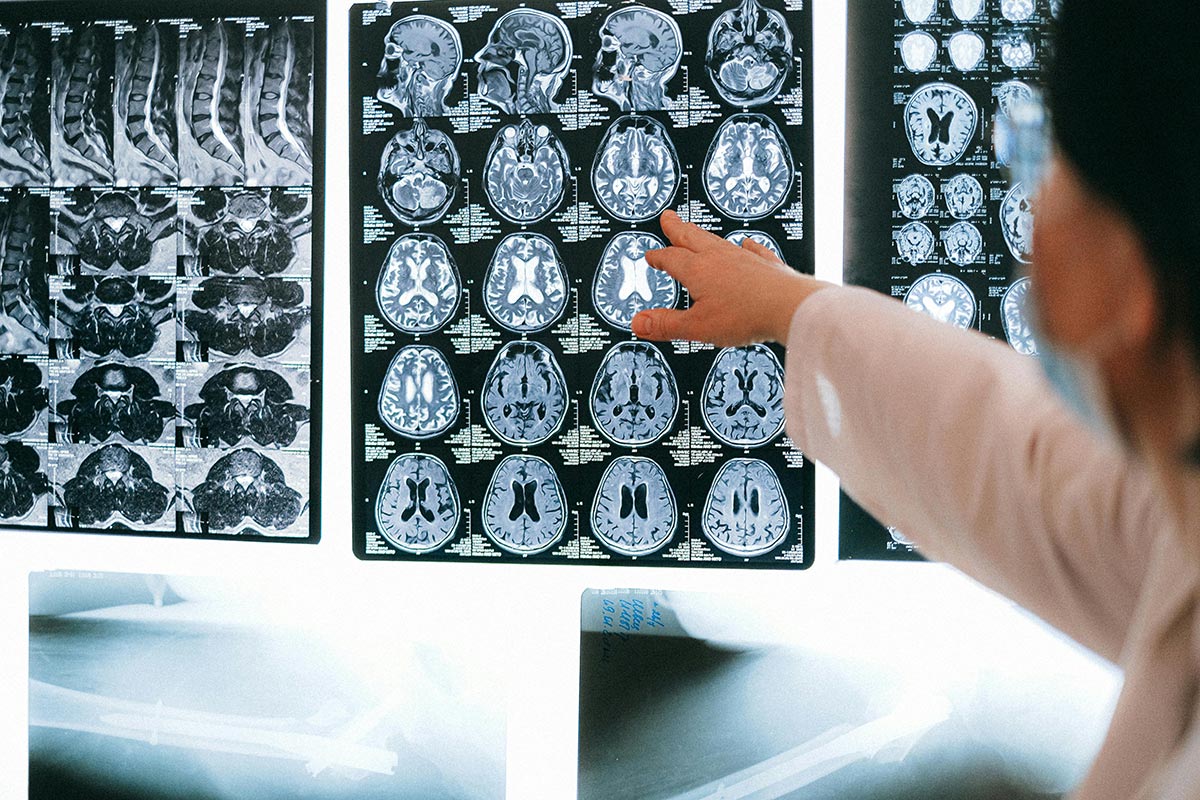

Medications for Alcohol Addiction
Overview of Medications
The journey toward recovery from alcohol addiction often involves the use of medications to help stop drinking. These medications work by alleviating cravings, reducing withdrawal symptoms, and promoting abstinence from alcohol. They play a crucial role in the comprehensive treatment of Alcohol Use Disorder (AUD). Medications can be particularly effective when combined with counseling and other therapeutic interventions.
The primary goal of these medications is to help individuals maintain long-term sobriety while managing the physiological and psychological aspects of addiction. Understanding the available options is essential for anyone seeking help with alcohol dependency.
Current FDA-Approved Medications
Currently, the U.S. Food and Drug Administration (FDA) has approved three main medications to assist in the treatment of AUD: disulfiram (Antabuse), naltrexone, and acamprosate. Each of these medications functions in distinct ways to support recovery.
MedicationYear ApprovedMechanism of ActionDisulfiram (Antabuse)1951Causes unpleasant reactions to alcohol intakeNaltrexone1994Reduces cravings and lowers the risk of relapseAcamprosate2004Restores balance to brain chemistry affected by alcohol use
Disulfiram works through aversion therapy, making drinking alcohol unpleasant. Patients taking disulfiram experience adverse effects such as nausea and vomiting if they consume alcohol, thus deterring them from drinking.
Naltrexone functions as an opioid antagonist. It has been found effective in reducing relapse rates and minimizing cravings in individuals with AUD, though its effectiveness may vary based on several factors NCBI.
Acamprosate is designed to help maintain abstinence after quitting drinking by restoring normal brain function disrupted by alcohol. It has shown consistent effectiveness in clinical trials compared to placebo NCBI.
The combination of these medications may enhance overall treatment outcomes, especially when used alongside behavioral therapies. The American Psychiatric Association recommends these medications for individuals with moderate to severe AUD who aim to cut down or stop alcohol consumption PubMed.

Acamprosate (Campral)
Mechanism of Action
Acamprosate, commonly known by its brand name Campral, is a prescription medication designed to assist individuals looking to reduce alcohol consumption or maintain sobriety. It works by restoring the balance of neurotransmitters, specifically GABA and glutamate, in the brain. This balance is critical for managing cravings and the overall urge to drink after an individual has stopped consuming alcohol. Research suggests that Acamprosate can significantly aid in reducing cravings for alcohol when initiated post-abstinence. Additionally, it has demonstrated superior effectiveness in clinical trials compared to placebos, particularly when used alongside behavioral therapies.
Prescribing Guidelines
For optimal results, acamprosate is typically prescribed for individuals who have already stopped drinking. Adherence to the prescribed dosage is vital for its effectiveness, as consistent use helps maximize the medication's benefits in maintaining abstinence. The American Psychiatric Association recommends acamprosate or naltrexone for those diagnosed with moderate to severe alcohol use disorder (AUD) who aim to reduce or quit drinking [2].
Dosage Guidelines
Patient GroupRecommended DosageAdults starting treatment after abstinence666 mg (two 333 mg tablets) three times dailyIndividuals with renal impairmentDosage adjustments may be necessary, consult with a healthcare provider
It is essential for individuals to consult with their healthcare provider for personalized dosage recommendations and to monitor for potential side effects. Overall, acamprosate is a valuable addition to the arsenal of medications to help stop drinking, offering support for those on their recovery journey.
Naltrexone
Naltrexone is a key medication in the treatment of alcohol dependence, offering substantial support for those aiming to reduce their alcohol consumption. This medication has a specific impact on cravings and is available in various dosage forms.
Effects on Cravings
Naltrexone works by reducing cravings for alcohol and decreasing the pleasurable sensations associated with drinking. This makes it an effective tool for individuals who have been dependent on alcohol and wish to completely stop. Studies have shown that naltrexone significantly reduces heavy drinking episodes and prevents a return to heavy alcohol use, particularly when combined with comprehensive treatment strategies.
The mechanism of naltrexone involves blocking opioid receptors in the brain's reward pathways, which mediates the positive reinforcement usually experienced when consuming alcohol. By diminishing the reward experience, it helps manage cravings and overall alcohol use [1].
Dosage Forms and Administration
Naltrexone is available in two primary forms: oral tablets and long-acting injectable formulations. Each form has its own administration guidelines:
Dosage FormCommon Brand NamesAdministrationOral TabletReviaTaken daily, often started before considering the long-acting form.InjectableVivitrolAdministered once a month by a healthcare provider after a trial of oral naltrexone.
Individuals must typically try oral naltrexone first to monitor for any allergic reactions or intolerable side effects before moving to the injectable form [4].
Adherence to the prescribed dosage is crucial for naltrexone's effectiveness, as consistent use has been shown to improve outcomes in individuals with alcohol use disorder (AUD) [4]. For more information on how medications can assist those working towards sobriety, consider checking out our various resources including the sections on alcohol and arthritis, one year of sobriety, and the stages of alcoholism.
Disulfiram (Antabuse)
Disulfiram, commonly known as Antabuse, is a prescription medication designed to help people stay sober by discouraging consumption of alcohol through a highly unpleasant reaction when combined with alcohol.
Aversion Therapy
Disulfiram works as a form of aversion therapy. When a person consumes alcohol after taking Disulfiram, it blocks the enzyme aldehyde dehydrogenase in the liver. This blockage leads to the accumulation of acetaldehyde in the bloodstream, causing a host of distressing symptoms, including:
SymptomDescriptionDiaphoresisExcessive sweatingPalpitationsRapid heartbeatNauseaFeeling sick and vomitingFlushingRedness and heat in the face
The intensity of these reactions can vary depending on the amount of Disulfiram and alcohol consumed, making the person hesitant to drink again [5]. This property can be particularly useful for individuals who are motivated to discontinue alcohol use, especially when taken under a physician's supervision.
Adverse Effects and Considerations
While Disulfiram can be effective, it is essential to consider its potential adverse effects. The unpleasant reaction from consuming alcohol can be severe, leading to complications that may require medical attention. Other side effects may include fatigue, headache, and a metallic taste in the mouth.
Disulfiram is typically initiated only after at least 12 hours of abstinence from alcohol, and reactions can still occur up to 14 days after discontinuing the medication [3].
Supervision can enhance the effectiveness of Disulfiram. Many users may struggle to take the medication consistently on their own. Support from family or an addiction treatment program can help ensure adherence and optimize treatment outcomes [4].
Understanding the principles behind Disulfiram can assist individuals in making informed decisions regarding its use as part of their recovery journey. Having a thorough discussion with a healthcare provider can also help clarify any potential risks and ensure safe use of this medication alongside other substances. For further information regarding the impact of alcohol on health, explore our articles on stages of alcoholism and alcohol and arthritis.
Off-Label Medications for AUD
While there are several FDA-approved medications for treating alcohol use disorder (AUD), off-label medications may also provide therapeutic benefits for individuals seeking to reduce or quit drinking. This section highlights two such medications: topiramate and baclofen, along with gabapentin and its efficacy.
Topiramate and Baclofen
Topiramate and baclofen, although not approved by the FDA specifically for AUD, have demonstrated effectiveness in various studies. Topiramate has been particularly useful in reducing heavy drinking episodes and promoting abstinence from alcohol. Clinical findings suggest that topiramate can lead to significant improvements in alcohol consumption outcomes, such as a reduction in the percentage of drinking days and heavy drinking days [6].
MedicationEffectsCommon Adverse EffectsTopiramateReduces heavy drinking; promotes abstinenceCognitive dysfunction, dizziness, numbness, taste abnormalitiesBaclofenImproves alcohol consumption outcomesDrowsiness, dizziness, potential withdrawal symptoms
Baclofen has also shown promise in enhancing alcohol consumption results, boasting moderate evidence for its efficacy in decreasing the number of drinks consumed on drinking days compared to placebo.
Both topiramate and baclofen are considered in treatment guidelines for patients who have not responded to the traditional pharmacological options, providing additional avenues for effective recovery strategies.
Gabapentin and Its Efficacy
Gabapentin, originally developed as an anticonvulsant, has also been explored for its efficacy in treating AUD. While it has not received FDA approval for this indication, studies indicate that gabapentin may alleviate withdrawal symptoms and reduce heavy drinking in individuals with AUD. Research demonstrates that patients treated with gabapentin show improved outcomes compared to those receiving placebo treatments [4].
Gabapentin may equally assist in managing anxiety and discomfort associated with the withdrawal process, making it a valuable tool in the recovery process for individuals looking to stop drinking.
MedicationEffectsCommon Adverse EffectsGabapentinImproves withdrawal symptoms; reduces heavy drinkingDizziness, fatigue, potential for sedation
These off-label medications reveal alternative strategies and combinations to enhance recovery efforts for those struggling with alcohol addiction. For effective treatment, it is essential to consult healthcare professionals and evaluate all available options. For more insights into pharmacological treatments, explore our resources on medications to help stop drinking.
Combination Therapy
Benefits of Combining Medications
Combining medications for alcohol use disorder (AUD) has gained recognition for its potential advantages over single-drug treatments. Specifically, the combination of naltrexone and acamprosate is noteworthy. These two medications target different aspects of alcohol use behavior, which may lead to an enhanced overall effectiveness. Naltrexone works as an opioid receptor antagonist, reducing the reinforcing effects of alcohol, while acamprosate helps to stabilize neurotransmitter function during withdrawal NCBI.
The integration of behavioral therapy with pharmacological treatments further amplifies these benefits. Evidence suggests that patients receiving combined therapies demonstrate higher rates of abstinence and decreased heavy drinking episodes than those using medications alone PubMed. By adopting a holistic approach that includes both medication and behavioral interventions, healthcare providers can create tailored treatment plans that address multiple facets of addiction.
Medication CombinationMechanism of ActionPotential BenefitsNaltrexone + AcamprosateReduces craving and stabilizes neurotransmittersHigher abstinence rates, improved drinking outcomesDisulfiram + NaltrexoneCombines aversion therapy and craving reductionEnhanced motivation to abstain from alcohol
Effectiveness and Patient Outcomes
Clinical studies have demonstrated that patients undergoing combination therapy show a greater likelihood of maintaining sobriety and achieving long-term recovery. The use of both naltrexone and acamprosate has been found to result in significantly better treatment outcomes when compared to monotherapy. Research indicates that a higher proportion of individuals enrolled in combination therapy remain abstinent, showcasing the synergistic effects of these medications NCBI.
The American Psychiatric Association also supports this integrated approach, recommending acamprosate or naltrexone as first-line treatments for individuals with moderate to severe AUD who wish to reduce or quit drinking PubMed. This evidence underscores the importance of combining medications to create an effective treatment plan.
Study FocusOutcomesFindingsNaltrexone + AcamprosateRates of abstinenceIncreased efficacy compared to monotherapyBehavioral interventionsDrinking patternsSignificantly better outcomes with combined therapy
In summary, the combination of various medications along with behavioral strategies plays a critical role in improving outcomes for individuals grappling with alcohol addiction. For those seeking help, understanding the available options is essential for making informed decisions about their recovery journey. For more information on strategies related to alcohol dependence, visit our articles on stages of alcoholism and food to eat when detoxing from alcohol.
References
[2]:
[3]:
[4]:
[5]:
[6]:
.svg)





